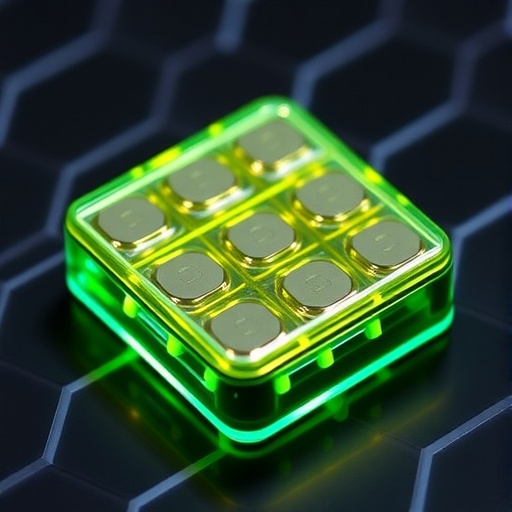In an age where the demand for longer-lasting energy storage solutions is surging, the quest for better battery technology has never been more critical. Presently, lithium-ion batteries dominate the market, powering everything from our pocket-sized devices to electric vehicles (EVs). However, despite their efficiency, these batteries face limitations in terms of energy density and weight. Enter a groundbreaking innovation from a team of researchers at the University of Florida, in collaboration with Purdue University and Vanderbilt University, who have introduced a revolutionary battery separator designed to enhance the performance of lithium-sulfur batteries.
Lithium-sulfur batteries have emerged as a more promising alternative to lithium-ion technology due to their capability to hold more energy while being lighter. However, they suffer from a significant drawback: the behavior of sulfur within the battery. In these batteries, sulfur tends to form long chains, which clogs the system, ultimately reducing the battery’s efficiency and lifespan. This challenge has plagued the development of lithium-sulfur batteries, making it imperative for researchers to identify solutions that can effectively mitigate these issues.
The innovative solution offered by the researchers is reminiscent of a microscopic filter, described by Piran Kidambi, an associate professor at the University of Florida, likening it to a “bouncer at a club” that selectively allows small lithium ions to pass while blocking the larger sulfur chains. This breakthrough is made possible through a high-performance filter crafted from a one-atom-thick layer of graphene. This remarkable material exhibits size-selective properties that fundamentally alter the dynamics within the battery.
To create this extraordinary filter, the research team employed a method known as chemical vapor deposition. This technique begins with a copper foil that is heated extensively, allowing a specific vapor to flow over it. During this process, a chemical reaction occurs, depositing a film of graphene with precisely defined openings that serve to separate lithium ions from sulfur chains. This meticulous design is integral to the filter’s ability to enhance battery performance by ensuring that only the desired particles can pass through.
Testing the new design highlighted the profound impact of the one-atom-thick filter. Batteries without the filter exhibited a rapid decline in performance, losing their efficiency almost immediately with continued charge and discharge cycles. In stark contrast, those utilizing the graphene separator retained nearly all of their capacity across more than 150 cycles. Kidambi noted the significant difference, praising the consistent performance of the batteries equipped with the innovative filter.
The implications of this technology stretch far beyond consumer electronics and electric cars. As we look towards larger modes of transportation, such as freight trucks, trains, and ships, the importance of reducing battery weight becomes paramount. As these vehicles require more energy to operate, the weight of their batteries escalates exponentially, often approaching the load they are intended to transport. Thus, the advancements in lithium-sulfur battery technology offer a plausible solution to address these compounding weight issues.
Despite the encouraging results achieved so far, the path to widespread commercial application of lithium-sulfur batteries with these atomically thin filters is still fraught with challenges. Kidambi acknowledges that while significant progress has been made, extensive work remains before this technology can be manufactured at scale and effectively integrated into everyday devices. The optimism surrounding the breakthrough stems from the scientific achievement of engineering a solution at the atomic level, which could perhaps transform the battery industry.
In the grander scheme, these advancements suggest a future where our devices can run longer and more efficiently. With electric vehicles potentially achieving greater range on a single charge, or drones staying aloft for extended periods, the real-world applications of such innovations are exhilarating. It opens up a realm of possibilities not just for personal use but for large-scale logistics and transport where energy efficiency and weight play critical roles.
As this technology continues to evolve, it also underscores the importance of collaborative and interdisciplinary research in addressing real-world problems. The blend of mechanical and aerospace engineering, materials science, and electrochemistry unites to tackle the contemporary challenges faced by battery technologies. This serves as a powerful reminder of how innovation often springs from the intersection of diverse fields.
Ultimately, the development of a size-selective nanoporous graphene separator could revolutionize our approach to energy storage. While traditional lithium-ion batteries have served us well, the future lies in more efficient, lightweight alternatives that can meet the rising global demand for sustainable power solutions. These advancements hint at a world where our devices require charging less frequently, and transportation becomes more efficient—a future powered by scientific ingenuity.
As researchers continue to refine their results and address the remaining obstacles, the excitement surrounding this project is palpable. An effective lithium-sulfur battery could pave the way for significant advancements in various sectors, enhancing everything from consumer electronics to large-scale energy storage systems. The journey towards practical implementation may be ongoing, but the potential rewards promise to redefine our relationship with energy consumption.
In conclusion, the innovative work being done at the University of Florida, alongside their esteemed partners, represents a pivotal moment in battery technology. By intrinsically understanding and manipulating the nanoscale interactions within lithium-sulfur batteries, researchers are not only solving existing problems but also setting the stage for a new era in energy storage. The anticipation surrounding these developments is not merely rooted in academic curiosity; it suggests a transformative impact on the everyday lives of individuals and industries alike.
Subject of Research: Lithium-sulfur battery technology and separator innovations
Article Title: Size-Selective Nanoporous Atomically Thin Graphene Separators for Lithium−Sulfur Batteries
News Publication Date: 4-Sep-2025
Web References: http://dx.doi.org/10.1021/acsami.5c11148
References: ACS Applied Materials & Interfaces
Image Credits: University of Florida
Keywords
Lithium-sulfur batteries, graphene, battery technology, energy storage, electric vehicles, nanoscale engineering




